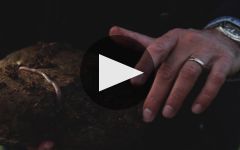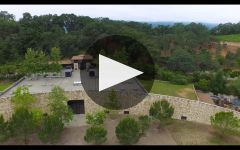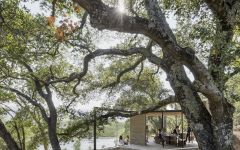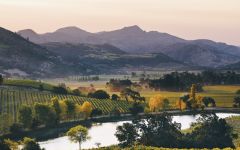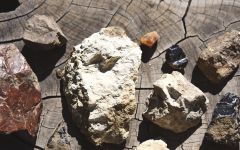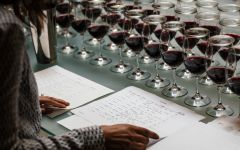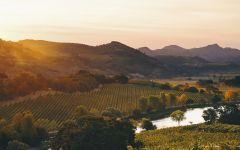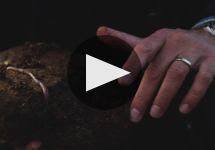Quintessa 2016
-
James
Suckling -
Jeb
Dunnuck -
Robert
Parker - Decanter
-
Wine
Spectator -
Wilfred
Wong



Product Details
Your Rating
Somm Note
Winemaker Notes
Professional Ratings
-
James Suckling
Phenomenal aromas of crushed berries, forest fruit, mushrooms and iron. Medium to full body, with layers of soft and refined tannins that follow through to a beautiful finish. Extremely long and refined. This shows depth and structure with balance and harmony.
-
Jeb Dunnuck
The 2016 Proprietary Red is a beauty based on 89% Cabernet Sauvignon, 6% Merlot, and the rest Cabernet Franc, Petit Verdot, and Carménère, all of which spent 20 months in just over 70% new French oak. This inky purple colored 2016 offers a perfumed, complex bouquet of sweet crème de cassis, Asian spices, lead pencil, and cedarwood. Full-bodied and plenty powerful, it shines even more for its flawless balance, polished tannins, and great finish. This is a quintessential, rich, elegant Napa Bordeaux blend to enjoy over the coming two decades or more.
-
Robert Parker's Wine Advocate
Quintessa's 2016 Proprietary Red Wine boasts relatively youthful, primary fruit, with cherries and black cherries both appearing on the nose. Medium to full-bodied, it's silky and suave on the palate, framed by ripe, supple tannins that linger elegantly on the finish.
-
Decanter
Black cherry, grilled sage and cedar aromatics, smooth tannins and sweet black cherry fruits on the palate. Relatively low acidities but feels well in balance and this is structured and confident with flesh and laid back confident appeal. 70% new oak. Carménère and Petit Verdot complete the blend.
-
Wine Spectator
A ripe, fleshy style, with dark currant, fig and blackberry fruit, steeped with sage, tobacco and warm licorice notes. A light alder hint stitches up the finish, showing latent, mineral-tinged grip. Solid. Cabernet Sauvignon, Merlot, Cabernet Franc, Petit Verdot and Carmenère. Best from 2020 through 2032.
-
Wilfred Wong of Wine.com
COMMENTARY: From the beginning, the Quintessa Red has carried the mantle as one of the Napa Valley's most elegant red wine. The 2016 vintage is a stylish and beautiful example of what this winery produces. TASTING NOTES: This wine is elegant, vibrant, and long. Its red-fruit accented aromas and flavors is bright and lasting from start to finish. Pair it with game birds. (Tasted: July 18, 2019, San Francisco, CA)
Other Vintages
2021-
Wine
Enthusiast -
James
Suckling -
Jeb
Dunnuck -
Robert
Parker -
Wine
Spectator - Vinous
- Decanter
-
James
Suckling -
Jeb
Dunnuck
-
Wine
Enthusiast -
James
Suckling -
Jeb
Dunnuck - Decanter
-
Robert
Parker -
Wine
Spectator
-
James
Suckling -
Wine
Enthusiast -
Robert
Parker -
Wine
Spectator
-
Robert
Parker -
James
Suckling -
Wilfred
Wong - Decanter
-
Wine
Spectator
-
James
Suckling -
Robert
Parker -
Wine &
Spirits
-
James
Suckling -
Robert
Parker
-
James
Suckling -
Robert
Parker - Decanter
-
James
Suckling -
Robert
Parker -
Wine
Spectator
-
Wilfred
Wong -
James
Suckling -
Wine
Enthusiast -
Connoisseurs'
Guide
- Decanter
-
Robert
Parker -
Wine &
Spirits -
Wine
Spectator
-
Connoisseurs'
Guide
-
Connoisseurs'
Guide -
Wine
Enthusiast -
Wine
Spectator -
Robert
Parker
-
Wine
Enthusiast -
Wilfred
Wong -
Wine &
Spirits
-
Connoisseurs'
Guide
-
Connoisseurs'
Guide -
Wine
Enthusiast -
Wine &
Spirits -
Wilfred
Wong
-
Wine
Enthusiast
-
Wine
Enthusiast -
Robert
Parker -
Wine &
Spirits
-
Wine
Spectator -
Wine
Enthusiast -
Wine &
Spirits
-
Wine
Enthusiast -
Wine
Spectator
-
Wine
Spectator -
Wine
Enthusiast
-
Wine
Spectator

A noble variety bestowed with both power and concentration, Cabernet Sauvignon enjoys success all over the globe, its best examples showing potential to age beautifully for decades. Cabernet Sauvignon flourishes in Bordeaux's Medoc where it is often blended with Merlot and smaller amounts of some combination of Cabernet Franc, Malbecand Petit Verdot. In the Napa Valley, ‘Cab’ is responsible for some of the world’s most prestigious, age-worthy and sought-after “cult” wines. Somm Secret—DNA profiling in 1997 revealed that Cabernet Sauvignon was born from a spontaneous crossing of Cabernet Franc and Sauvignon Blanc in 17th century southwest France.

The Rutherford sub-region of Napa Valley centers on the town of Rutherford and covers some of Napa Valley’s finest vineyard real estate, spanning from the Mayacamas in the west, to the Vaca Mountains on the other side of the valley.
Inside of the Rutherford AVA, bordering the Mayacamas, is a stretch of uplands called the Rutherford Bench. (These bench lands technically run the length of Oakville as well). Mountain runoff creates deep, well-drained, alluvial soils on the bench, giving vine roots plenty of reason to permeate deep into the ground. The result is wine with great structure and complexity.
Rutherford Cabernet Sauvingons and Bordeaux Blends garner substantial attention for their enticing fragrances of dusty earth and dried herbs, broad and juicy mid-palates and lush and fine-grained tannins. The sub-appellation claims some of the valley’s most prized vineyards today, namely Caymus, Rubicon and Beckstoffer Georges III.
It is also home to Napa’s most influential and historic personalities. Thomas Rutherford, responsible for the appellation's name, made serious investments here in grape growing and wine production between the years of 1850 to 1880. Gustave Niebaum purchased a large swath of land and completed his winery in 1887, calling it “Inglenook.” Today this remains the oldest bonded winery in California. Georges Latour founded Beaulieu Vineyard in 1900, making it the oldest continuous winery in the state. Latour also hired the famous enologist, André Tchelistcheff, a man credited for single-handedly defining the modern Napa winemaking style.

